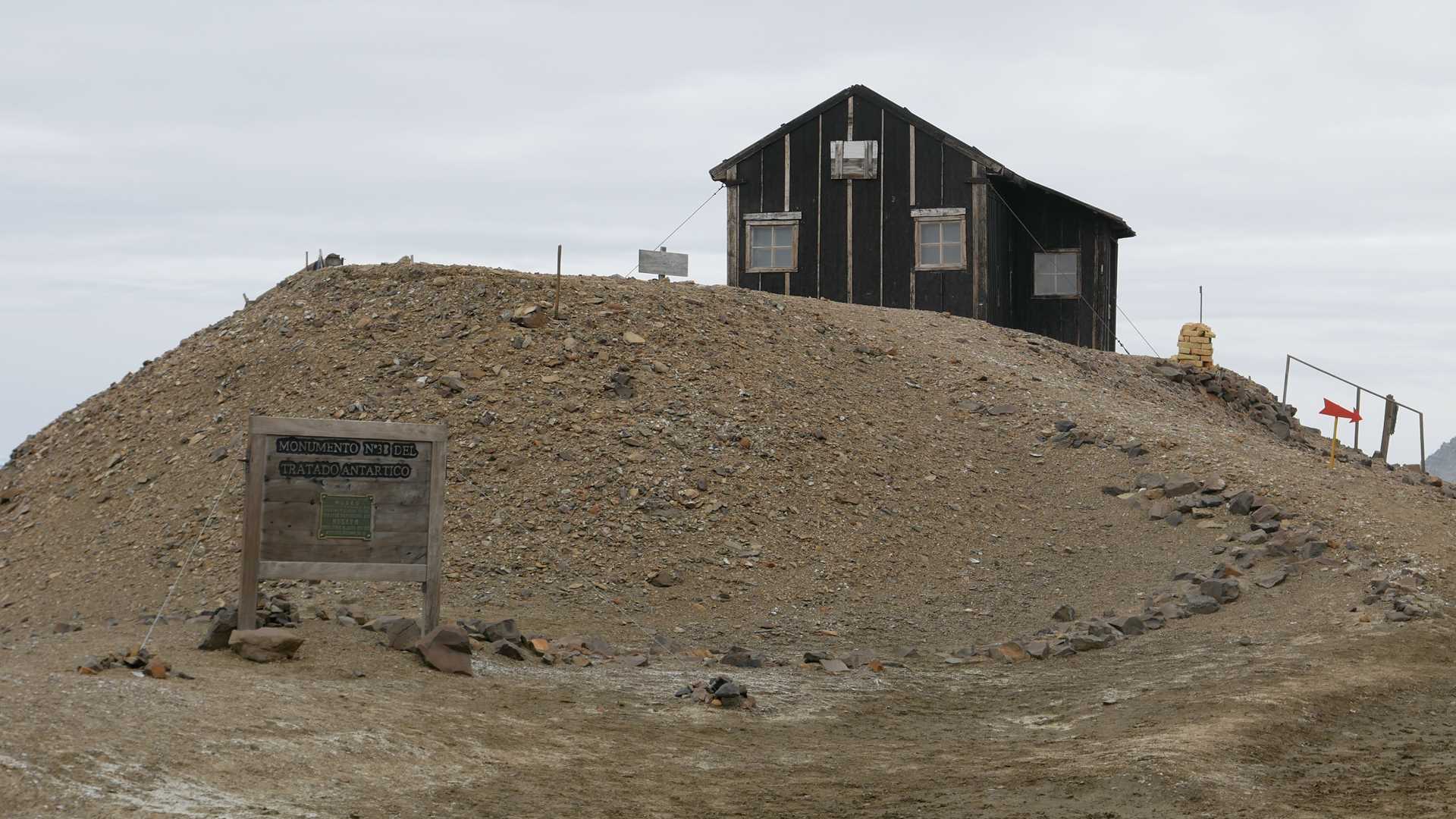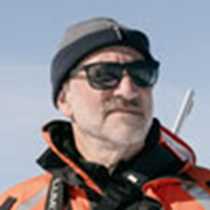After a night of festivities, New Year’s Day found us working our way toward Snow Hill Island, home to a colony of emperor penguins and the site of Nordenskjold’s hut. The emperors have grown scarce since the land-fast ice has broken free and drifted away, but Adelie penguins dotted icebergs throughout the area as we approached our destination.
Ice prevented National Geographic Explorer from approaching the shore, but a long Zodiac ride through the growlers and bergy bits allowed us to land at the site of Swedish Antarctic Expedition’s base camp from 1903-1905. Named for the leader of the expedition, Nordenskjold’s hut is a small, three-room structure made from Scandinavian fir that was precut, hauled from Sweden, and coated in tar to protect it from the elements. The hut was built in February 1903, and it was intended to be a home for six scientists for one year. When the ship that was to retrieve them failed to return the following year, the scientists ended up spending an unexpected second year in the cabin.
Thick deposits of fossil-bearing marine sediments drew the expedition’s leaders to the location, and we, too, found abundant fossils as we followed the trail from the beach up to the slope above the cabin. Ammonites and fossil corals at the site tell the story of a warm ocean from a time long past when the Antarctic continent was much farther north.
While members of the expedition were drawn by the prospect of scientific exploration in one of the least-known places in the world, we found ourselves wondering how they managed to live for two years in such a tiny space. Over the course of our visit, the wind picked up, the fog rolled in, and snow began to fly. As the temperature continued to drop, we found it hard to think of five people with whom we would want to spend that much time in such close quarters, especially in a place where the winters are very long, very dark, and very cold.







